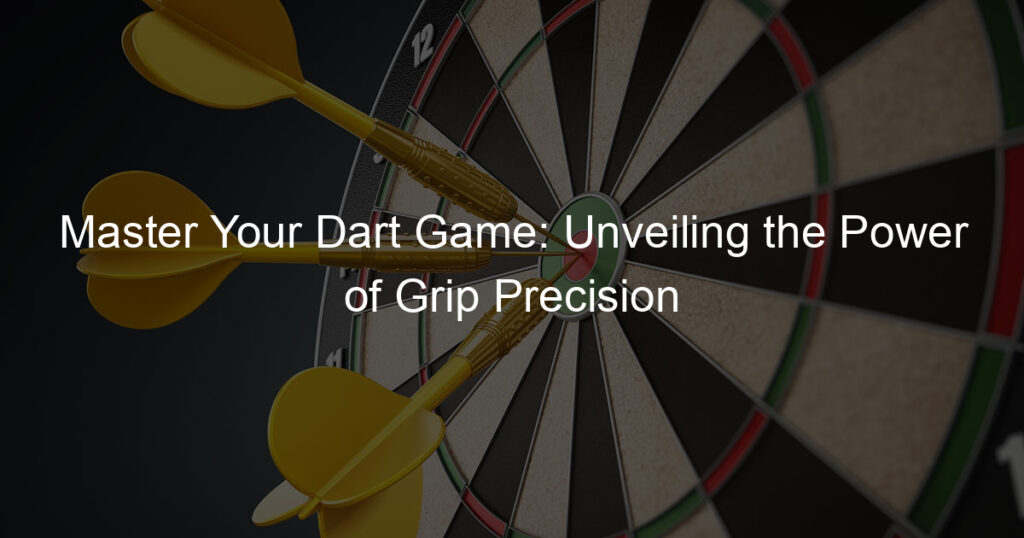Whether you’re a first-time dart player or a seasoned veteran, knowing how to hang a dartboard is an important skill. There are many things to consider when hanging a dartboard, from the height of the board to the type of board to the location of the board in your room.
In this blog post, we’ll take you through all the steps you need to know to hang your dartboard like a pro.
Dartboard
A dartboard is a circular board with numbered sections used to play the game of darts. It typically has 20 numbered sections, with each section representing a different score. The center of the board is typically divided into two sections: the bullseye and the outer ring. The bullseye is worth 50 points, while the outer ring is worth 25 points. There are also several other scoring zones on a dartboard, with each zone worth a different number of points.
The game of darts is typically played by throwing three steel tip darts at the dartboard standing at the throw line, with the goal of scoring as many points as possible. The player with the highest score at the end of the game wins. Dartboards are usually made from either sisal or bristle, with both materials providing a durable and long-lasting surface for play.
How To Hang A Dartboard?
Hanging a dart board may seem like a simple task, but there are a few things to keep in mind to ensure that it is done correctly.
- The first step is to find the center of the board and mark it with a pencil.
- Then, using a level, mark the top and bottom of the board at equal distances from the center mark.
- Next, measure the distance from the floor to the center mark and transfer this measurement to the wall. Once again, using a level, mark the top and bottom of the board at equal distances from the center mark.
- Finally, using a drill, create holes at each of the marks and screw in drywall anchors. Then simply hang the dartboard on the anchors and start playing!
Things To Consider When Hanging A Dartboard:
Location
Location is key. When choosing a location for your dartboard, make sure to consider the throw line distance and the lighting in the room. Measuring throw line distance is very important.
You’ll also want to make sure that there are no objects nearby that could interfere with your game. This will help ensure that you have plenty of space to throw your soft tip dart or steel tip dart without worrying about hitting something.
Height
Hang your dartboard at the right height. The ideal height for a dartboard is 5 feet 8 inches from the floor to the center of the board. Use a level to make sure your dartboard is hung level. This will ensure that the darts land in the scoring zones properly. Hang your dartboard in a place where it won’t be disturbed.
Type Of Board
Choose the right type of dartboard. There are two main types of dart boards: sisal and bristle. You can choose between a traditional sisal board or an electronic bristle board.
Lighting
Lighting is important. Good lighting is key to playing darts, as it can help you see the board and the darts more clearly. If possible, choose a location for your dartboard that is well-lit.
Types Of Dartboards:
There are many different types of dartboards available on the market today.
Electronic Dartboards
While electronic dartboards are becoming increasingly popular, there are still a number of different types of traditional boards to choose from.
Sisal Fibers
The most common type of board is made from sisal fibers, which are compressed and then glued together to form a dense surface. This type of board is very durable and can withstand a lot of abuse.
Cork Boards
Another popular type of board is made from cork, which is softer than sisal and therefore easier on your darts. Cork boards also have the advantage of being self-healing, meaning that they will close up after a dart has been removed.
Bristle Boards
Bristle boards are made from stiff animal hair and are considered the premier choice for serious players. Bristle boards are extremely durable and provide a consistent playing surface.
No matter what type of board you choose, make sure that it is the right size for your darts. A board that is too small will make it difficult to score, while a board that is too large will be easy to miss. Choose a board that is appropriate for your skill level and you’ll be sure to enjoy hours of fun.
Factors That Can Affect On The Dartboard Game
Anyone who has ever played darts knows that there are a number of factors that can affect the game. The type of dartboard, the weight and balance of the darts, and even the wind can all make a difference in how the game is played.
However, one of the most important factors is the throw itself. The way you grip the steel tip dartboards, the angle at which you release it, and the amount of force you use all play a role in where the dart will land. By taking these factors into account, you can improve your aim and increase your chances of making a successful shot.
The Ending Note:
It is important to hang your dartboard in such a way that the bullseye is at eye level for the player throwing the darts. The dartboard should be fixed 5 feet 8 inches from the floor to the center of the board. A level should be used to make sure your dartboard is hung level. This will ensure that the darts land on the board and not on the floor.
Now that you know how to hang a dartboard, it’s time to start playing! Invite some friends over and see who can rack up the most points. With a little practice and practice, you’ll be throwing darts like a pro in no time.
Happy Playing!














